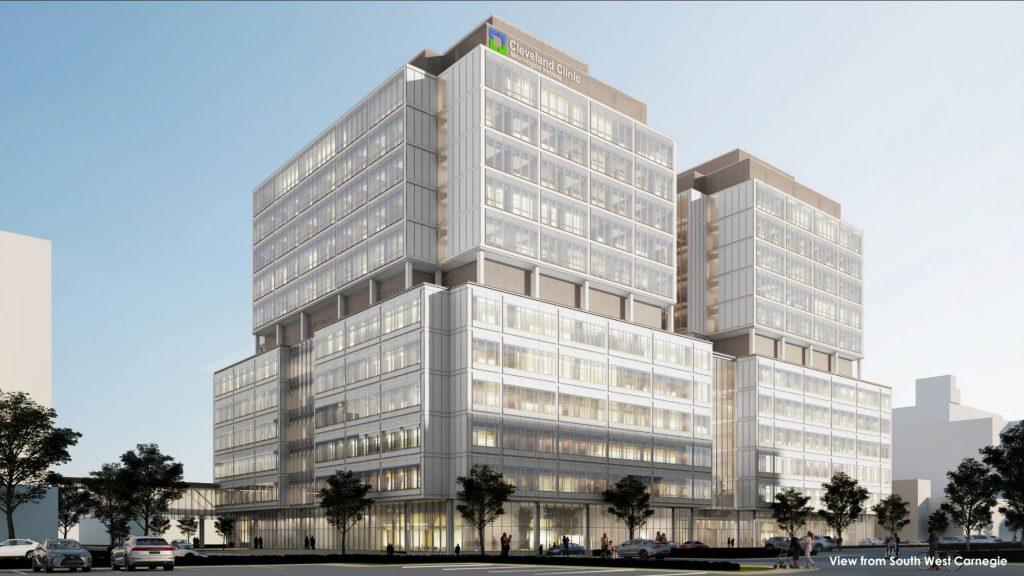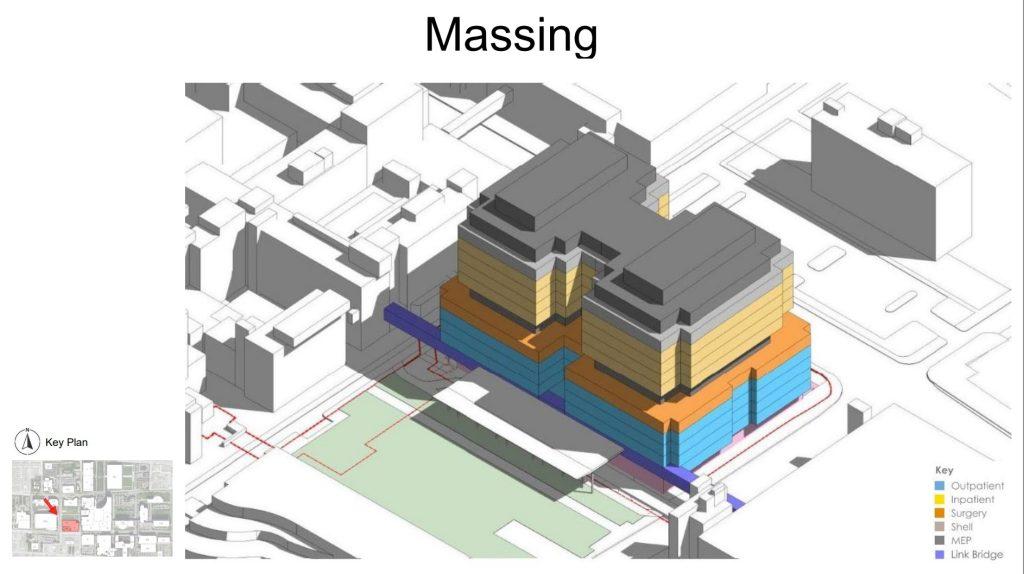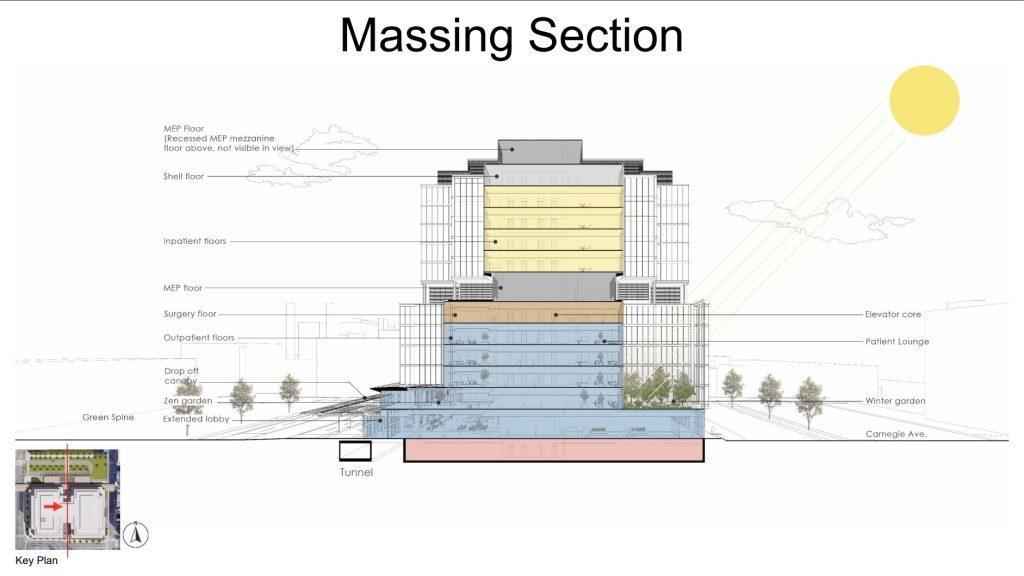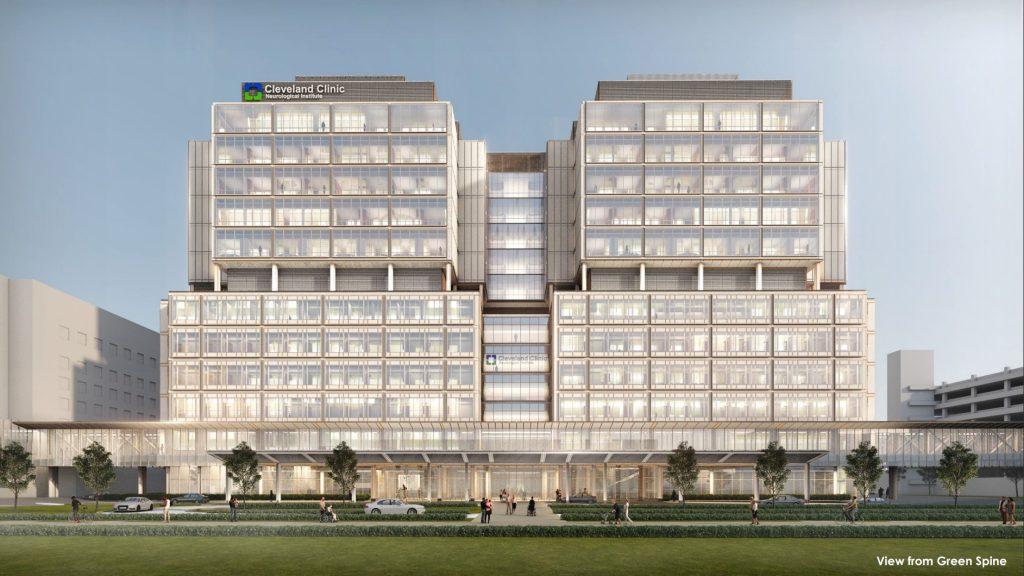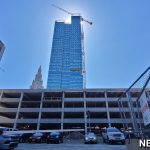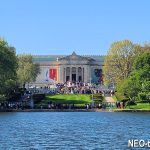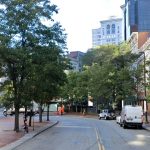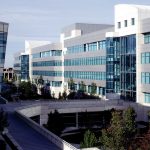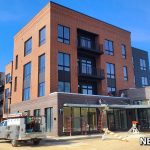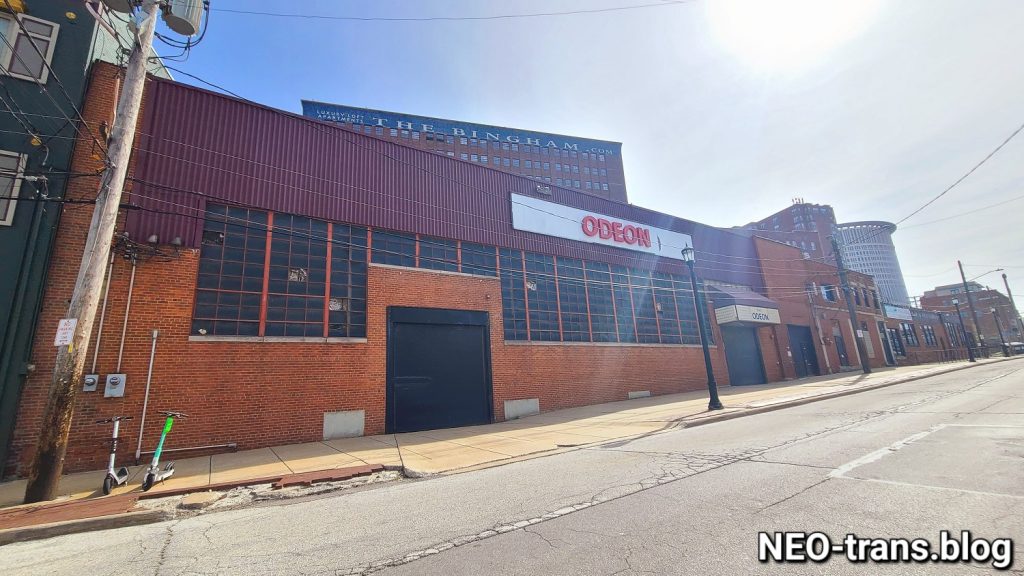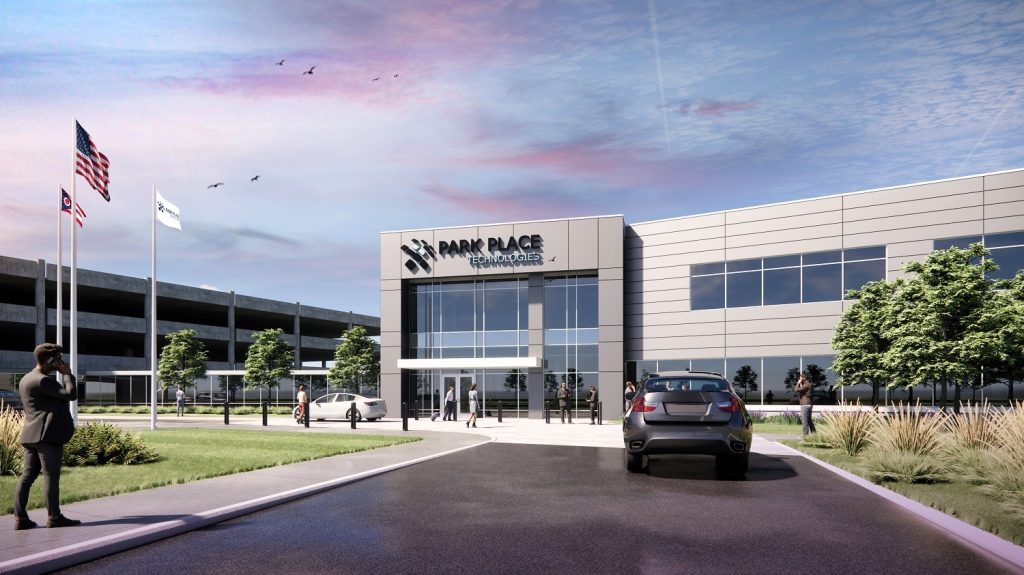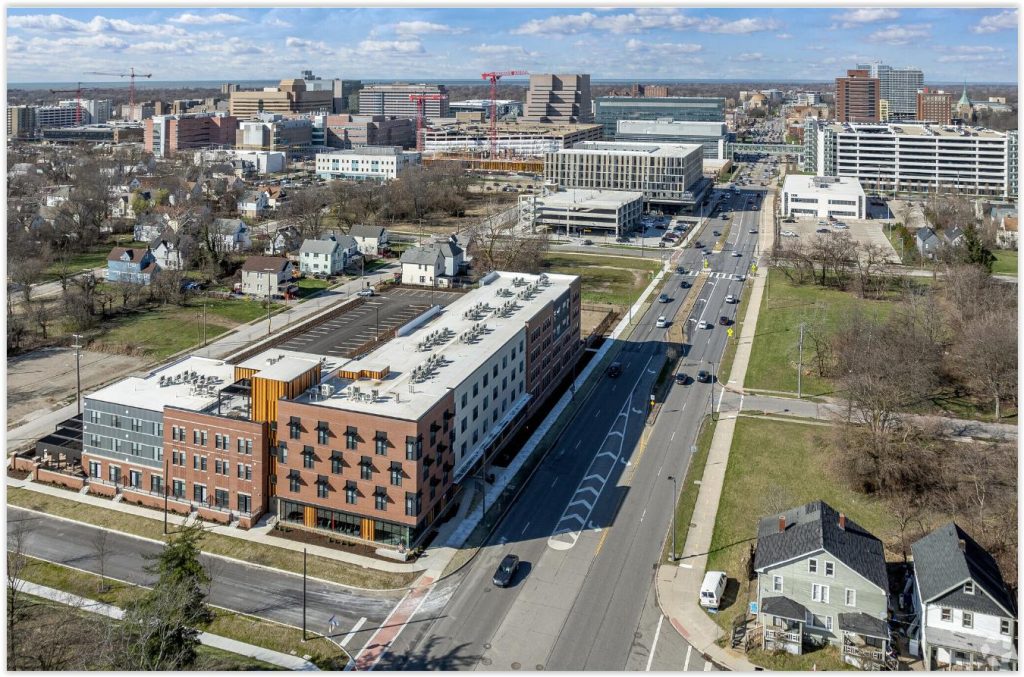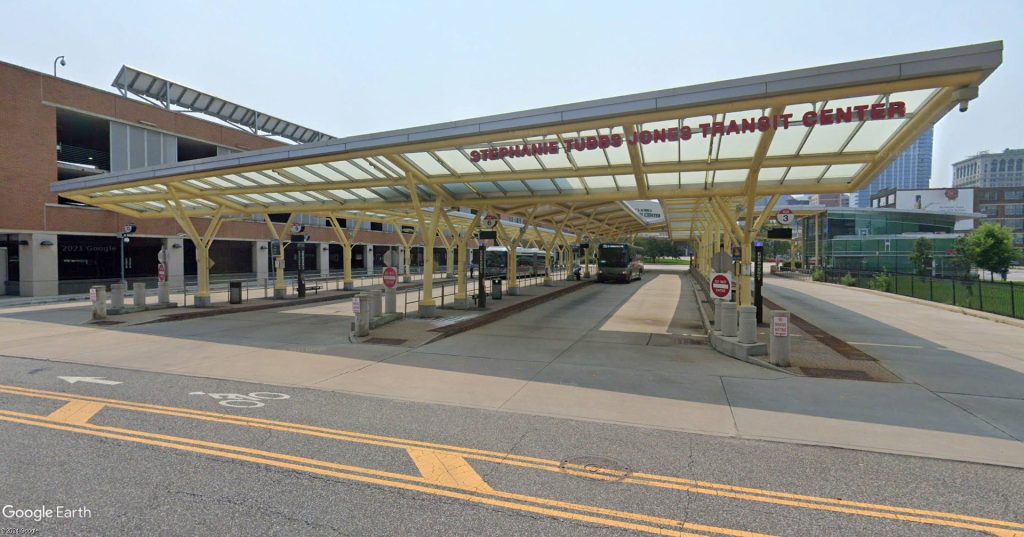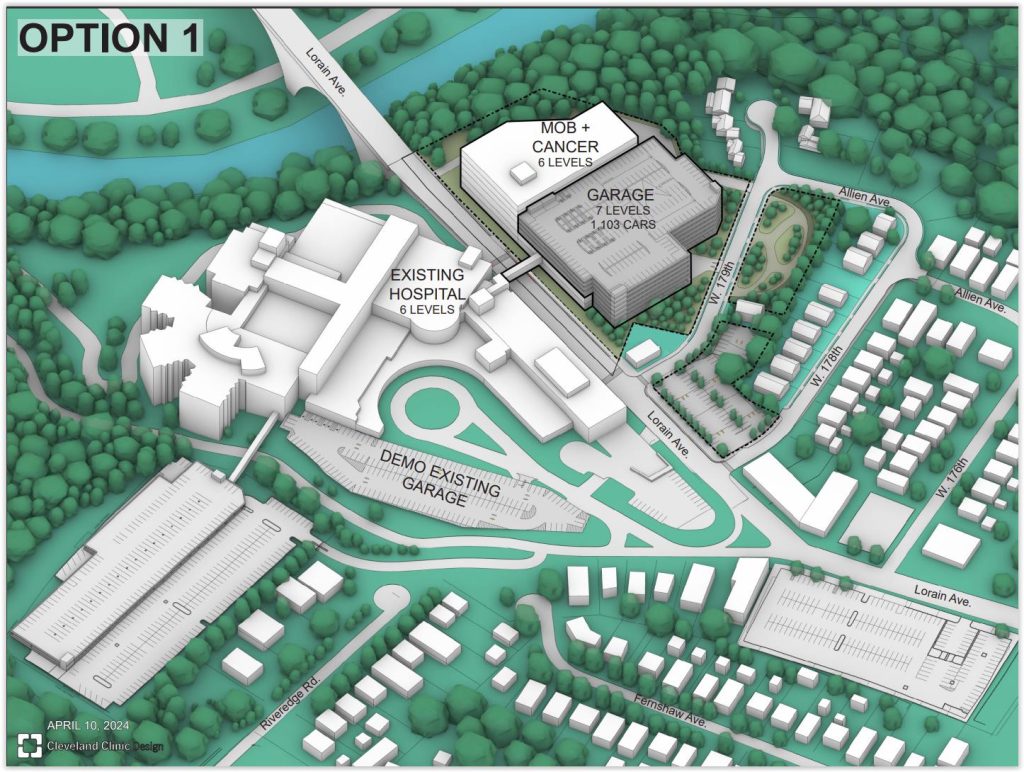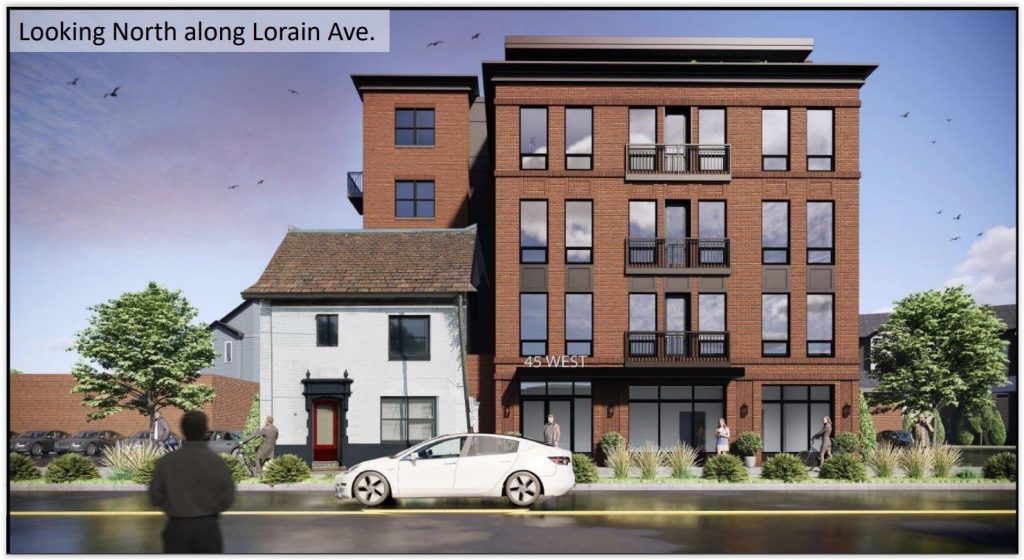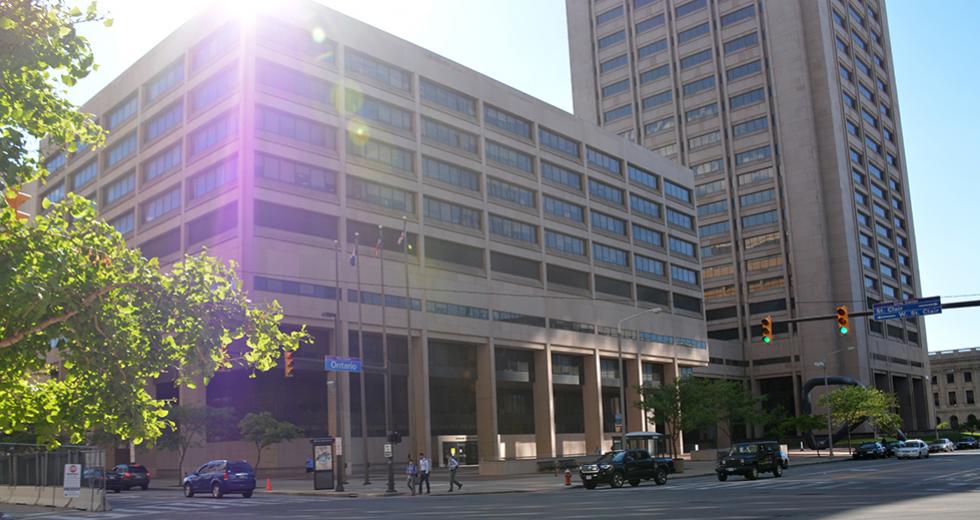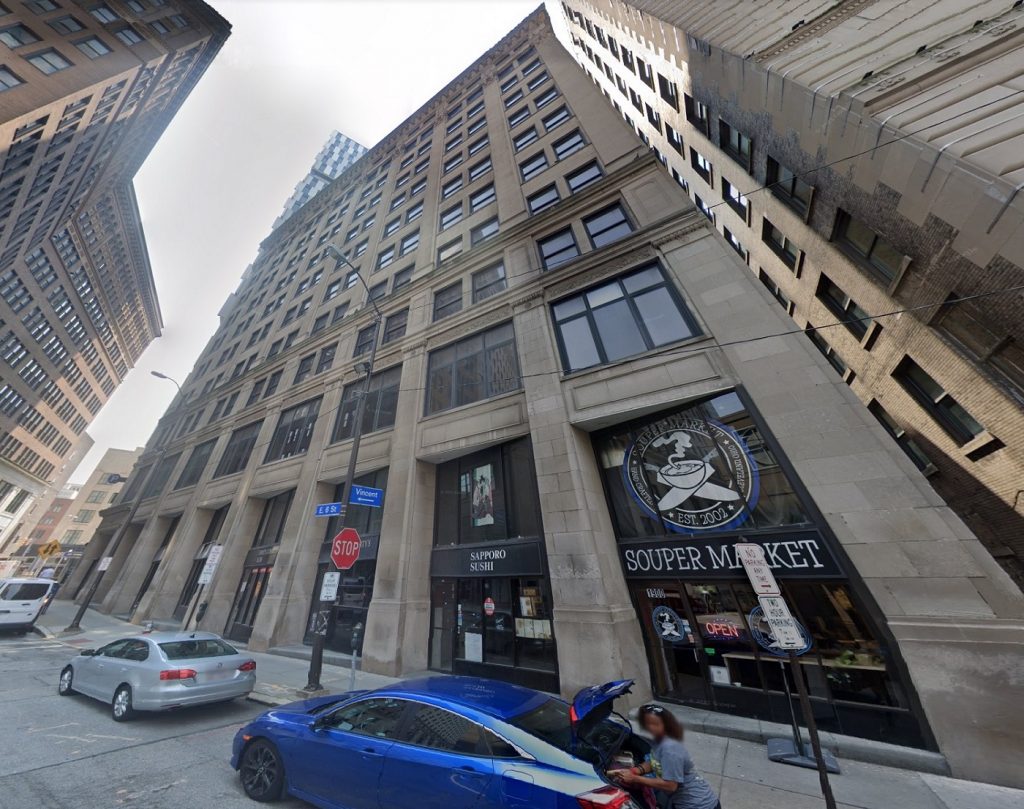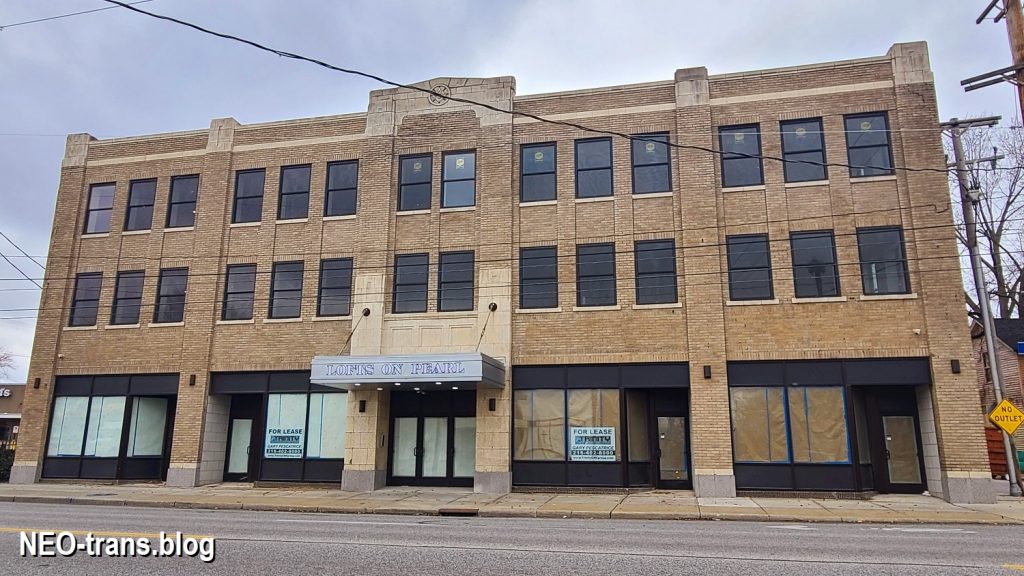Neuro project to be Clinic’s tallest, most massive
In several days, the City Planning Commission’s Design Review Committee will get its first chance to offer its opinion on the design of what will be the Cleveland Clinic’s largest-ever building. The facility will be the new home of the Clinic’s Neurological Institute — a 1-million-square-foot structure that will tower over Carnegie Avenue, between East 89th and 90th streets. It is the current site of the eight-story P Building surgery center that is now being demolished.
In its place will be a 14-story, 243-foot-tall structure that is wider than it is high. But that height will make it the Clinic’s tallest building located at its main campus near Cleveland’s University Circle. The Clinic’s current tallest is the 218-foot-tall, 12-floor, 330,00-square-foot Glickman Tower (Q Building), 2050 E. 96th St. It was built in 2008. Although the W.O. Walker Center, 10524 Euclid Ave., has more floors, 16 to be precise, it is only 208 feet tall. It was built in 1984 by the Industrial Commission of Ohio to care for injured workers.
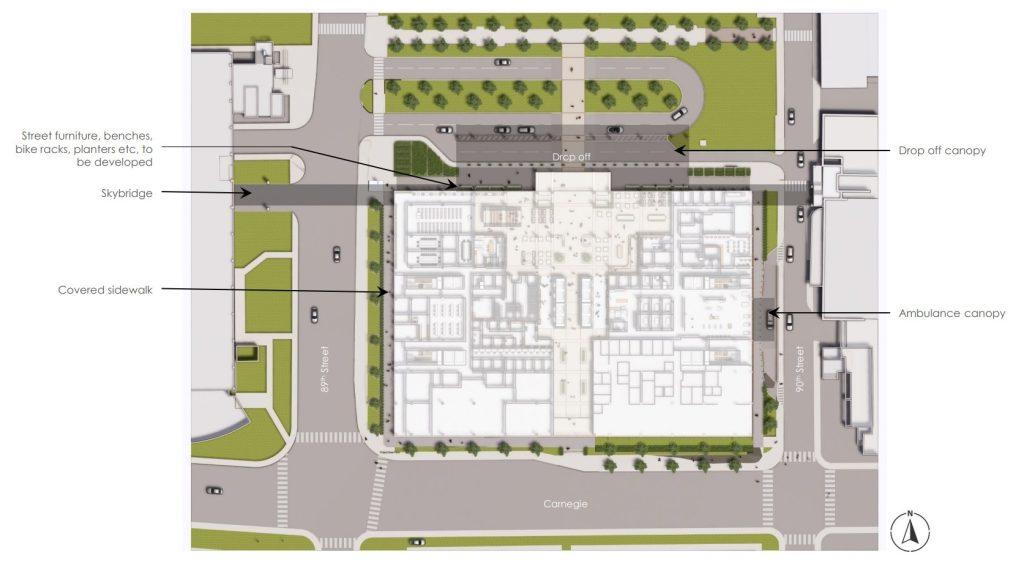
Site plan with insight to the ground-floor of the new Neuro Building, plus landscaping as well as pedestrian and vehicular access to the site (Cleveland Clinic).
The new Neurological Institute, or Neuro Building as some at the Clinic call it, is being designed by London-based Hopkins Architects which is partnering with Stantec Architecture of Edmonton, Alberta. Stantec has an office in downtown Cleveland. Those two firms are presenting schematic-level plans for the project to the committee. After receiving input from committee members, the project’s architects will refine the design and submit final plans to the city for approval, probably by the end of the year.
It is just one of several large-scale new building projects that the Clinic is undertaking in the coming years, mostly at its Main Campus, which represents a total investment of more than $1.3 billion. The other projects at its Main Campus are the expanded and renovated Cole Eye Institute at Euclid and East 105th Street as well as the multi-phase development of the the Global Center for Pathogen & Human Health Research at several locations along the north side of Cedar, west of East 105th. Those projects are expected to bring 9,500 new jobs to the Cleveland Clinic and neighborhoods surrounding it.
But none of those will be anywhere near as big as the new Neurological Institute which also promises several thousand new jobs, both in construction and permanent work. Plans for the new Neuro Building show the sixth floor dedicated to surgery with the four floors below it devoted to outpatient care and another four floors above it to inpatient care with room for expansion.
The inpatient care floors were the big addition to the project which was originally intended to be a mostly outpatient neurological care facility measuring about 400,000 square feet. Adding inpatient care not only increased the physical size of the building but also the number of new, permanent jobs including nurses, assistants, technicians, care managers, coders, food service aides and, of course, physicians, potentially adding more than 2,000 workers.
The building has numerous features to make it more self-contained, as is common with many of Cleveland Clinic’s buildings. It will be connected by a new enclosed walkway called the Link Bridge above East 89th to the existing, 4,000-space parking garage to the west and above East 90th to the existing Children’s Hospital to the east. And the Neuro Building will have a multi-story, glass-enclosed winter garden rising up from the second floor on its south side, facing Carnegie and the fleeting sun during the cold-weather months. Patient lounges on each floor above the ground floor will overlook the winter garden.
Although no cost figure has been released for the construction of the Neurological Institute, it is likely in the area of $650 million to $800 million, based on per-square-foot costs of the Cole Eye expansion and other large building projects in Cleveland. Construction could begin early next year, after the surgery center is cleared from the site and the former Cleveland Play House (CPH), 8500 Euclid, is demolished to provide a construction staging area for the Neurological Institute.
After that, the 11.3-acre CPH site may be redeveloped with multiple uses, including a new site for a police station and Main Campus utilities. Clinic staff also said the site could be used for housing. If only half of the CPH site is used for housing over retail, like the six-story Fairfax Market development now under construction on Clinic-owned land at Cedar and East 105th, more than 1,200 residential units could be provided. If offered to Clinic employees, the new housing would reduce the need for adding more parking garages.
However, sources who spoke off the record say the Clinic isn’t yet done building new parking garages on campus. It could build one to join the other mix of potential uses at the CPH site. And it could construct a strategically placed garage at Cedar and East 105th, just south of the expanding Cole Eye Institute and just east of the new Global Center for Pathogen & Human Health Research. That site is also at the northeast end of the newly opened Opportunity Corridor Boulevard.
END
Our latest Greater Cleveland development news
- Sherwin-Williams: already outgrown its new HQ
- Cleveland Museum of Art’s $8M lobby reno starts May 1
- Downtown: Huron may close for street market
- Progressive Insurance puts offices up for sale
- Superman statue, creators’ tribute plaza near to landing in Downtown Cleveland
- Rocky River apartments to open May 1

